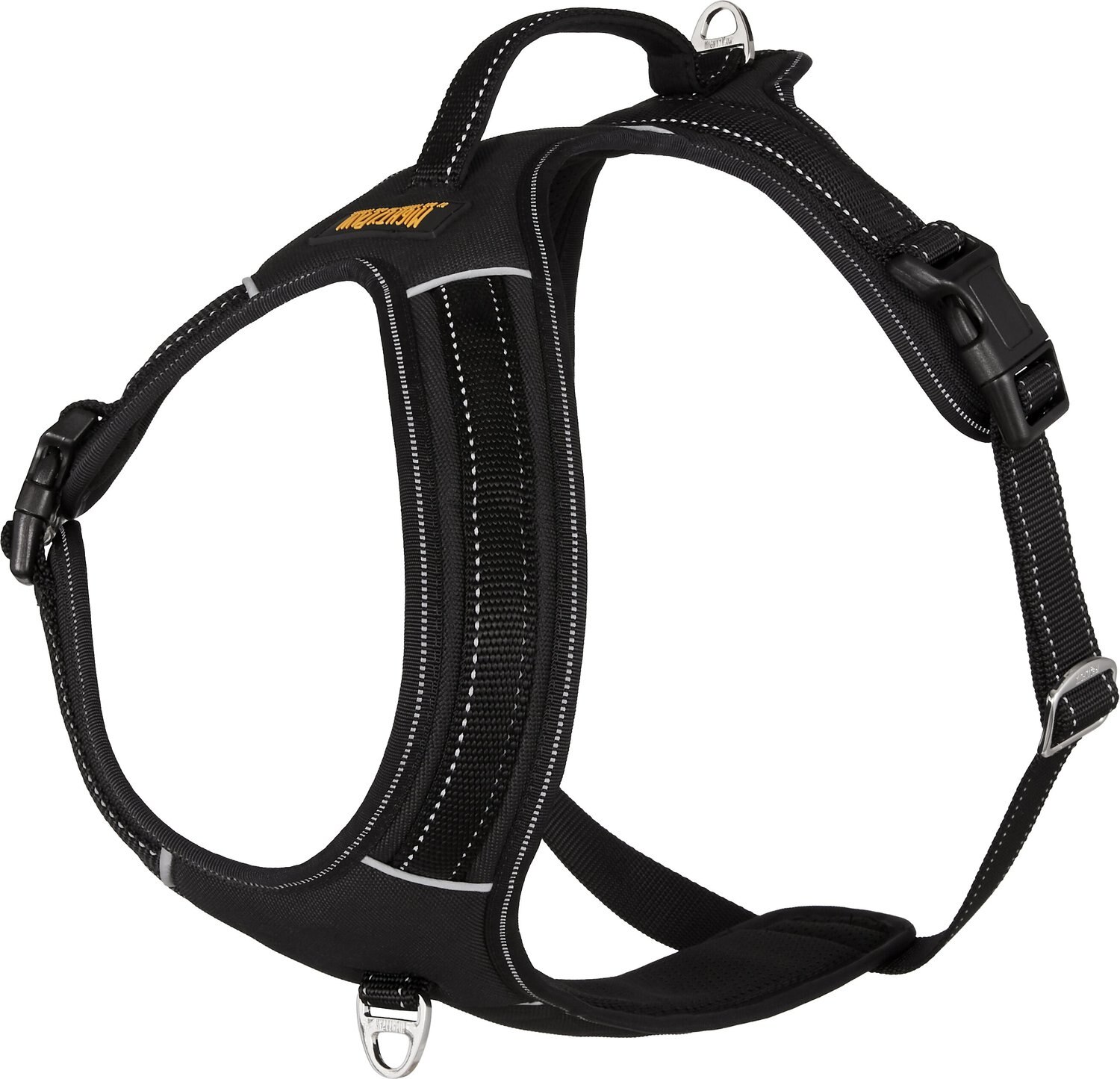Explained: Why Your Dog Chases Cats (And How to Stop It)
@media (min-width: 481px) {
.mobile-top-content {
display: none;
}
}
#mobileTopContentCTACarouselControls { overflow: hidden; text-overflow: ellipsis; white-space: nowrap; }
.mobile-top-content .more { color: #fff; }
.mobile-top-content a { color: #fff; text-decoration: underline; }
.mobile-top-content a:hover { color: #fff; text-decoration: underline; }
@media (max-width: 480px) {
.mobile-top-content {
background-color: #06a10b;
color: #fff;
text-align: center;
/*height: 60px;
padding-top:5px;*/
font-size:80%;
/* display: block; */
margin: 0px -30px;
}
}
Many pet owners know cats and dogs can live happily together in one home, despite cartoons and commonly used metaphors that say otherwise. That doesn’t mean it’s always easy for them to get along. Dogs like to chase cats, at least some dogs want to. Why do dogs chase cats? Specific breeds like herding and hunting dogs have a natural instinct to chase smaller animals that move like prey.
The good news is just because they have a predisposition to chase doesn’t mean they can’t be taught not to terrorize a cat. It might be a lengthy training process and in some severe cases, require a behaviorist, but it’s possible. For dogs with high prey drives that act aggressively toward smaller animals, it’s recommended for a cat’s safety not to have one in the same home.
If you notice your dog trying to chase after your cat, you should act quickly to address the issue. The behavior is self-reinforced. The more your dog chases after the cat, the more it confirms the behavior and rewards your dog when the cat runs. It’s best to keep them separate while working to resolve the issue. Getting a baby gate and separating them in the home when you aren’t around will help you control their interactions with each other.
button.pulse {
transform: scale(1); animation: pulse 2s infinite;
box-shadow: 0 0 0 0 rgba(11, 247, 25, 1);
}
@keyframes pulse {
0% { transform: scale(0.90); box-shadow: 0 0 0 0 rgba(11, 247, 25, 0.5); }
60% { transform: scale(1); box-shadow: 0 0 0 15px rgba(11, 247, 25, 0); }
100% { transform: scale(0.90); box-shadow: 0 0 0 0 rgba(11, 247, 25, 0); }
}
Exercise
For dog breeds that don’t have a high prey drive or puppies, sometimes chasing the cat can be a form of play. They find it fun to run after them the same way when chasing after a ball you throw. When training a dog or breaking them out of destructive behavior, it’s essential to make sure they receive enough mental and physical stimulation.
Take your dog out for daily walks, or play a game of fetch with them. If your dog enjoys chasing the cat, they would probably get just as much enjoyment chasing after a ball or frisbee. Give them ways to expend their energy in an appropriate setting. Exercising them might help with the training, but don’t overdo it. Training them can also be tiring for a dog. Make sure you give them enough exercise to take the edge off but make sure they still have enough energy to focus.
- Keep your dog safely entertained
- Automatic feature for solo playtime
- Features three distance settings
- Comes with a remote for alternative play
Introductions
Even if your dog and cat have already met before, it’s essential to reintroduce them in a controlled setting. Your main objective is to teach your dog to ignore the cat, but it’s equally as important to make sure your cat feels comfortable around the dog. Slowly reintroducing the two can help your cat feel safe and more confident around the dog.
Use a baby gate and section off two rooms in your home. Put them on each side so they can see each other. Make a habit of feeding both of them on either side of the gate when they are together. Feeding them at the same time close to each other will help them associate each other with something good. When separated, if your dog displays interest in the cat while on the other side, start the training process with them separated by the gate, get a low-calorie training treat you can use, and start by calling your dog’s attention to you. When your dog looks at you, reward them with a treat. For a quick form of praise, get a clicker or use a confirmation like “Yes” or “good” while you give them a treat.
- Pressure mounting design
- Double-lock safety release allows it to double as a baby gate
- Durable stainless-steel construction
- Can be adjusted to fit openings between 29.5 and 46 inches
Teach Them A Command
Leave it, or come, are two powerful commands that are beneficial to teach your dog for a handful of scenarios. It would be helpful to teach the dog one of those commands when dealing with a dog that chases a cat. You can practice the command with a high-value item to start training them. When the dog approaches the toy or food, say “Leave It” or call your dog to you. If they turn to give you their attention, you should click or say “Yes” and immediately provide them with a treat.
Repeat those steps until you feel like your dog has a firm grasp of that command. A strong call-back command like “come” is also a great way to stop them from pursuing after the cat. If you struggle with teaching them basic commands, get help from a professional trainer or behaviorist.
Give Your Cat Confidence
The best way to help your cat get confident with your dog is to make it impossible for your dog to chase the cat. Give them ways to feel safe and comfortable in the house and even in the same room. Baby gate sections of the house where they can leave and separate themselves if they start to feel uncomfortable, and put cat towers or shelves that they can climb to get away from the dog. When you let the cat into the same room, feed them a high-value treat anytime they show confidence approaching the dog. The less nervous and jumpy the cat is around the dog, the less they might trigger the dog’s instincts to chase them.
Use A Leash
Using a rope or nylon adjustable leash, put your dog in the same room as your cat. You should start off keeping your dog on a short leash and allow your cat to roam the room freely. When your dog is looking at the cat, call to your dog or tell your dog “leave it” every time your dog looks away from the cat, give the dog a treat. Once you feel like your dog can ignore the cat on a shorter leash, extend it to provide the dog with more room to roam. Repeat the same process of calling your dog over every time the dog looks at the cat.
If your dog barks or lunges at the cat to run after them, correct them by saying “no” or making a loud noise, then shorten the leash and repeat the steps. The overall objective is to teach them a strong command that when they are off-leash, you can call them over before they start to chase after the cat and teach them that they get a reward for ignoring them. Using a leash is a great training tool that gives you control over the situation and ensures the cat’s safety.
- Completely weather-proof
- Features dual-clip attachments
- Comfortable and non-restrictive
- Comes with adjustable straps
Supervision
When training your dog to behave around cats, separate them if you aren’t in the same room. That will ensure that they aren’t going back to past behavior and that your cat is safe. If you have a bigger dog that might be able to barge through a baby gate, section off rooms of the house that are only accessible to your cat and make sure they have access to their water and litter box.
Should You Get A Cat?
If you have a dog that you know likes to chase small animals or has a high prey drive, and you want a cat, consider getting a cat that will match your dog’s personality. Regardless of the temperament of your cat, be prepared to do some training. If you find a cat that is also high energy and likes to play, it might help them adjust to each other. A low-key, laid-back cat might not be best for a high-energy dog. Keep that in mind when you are looking for a cat. Also, consider enlisting the help of a certified trainer when you first introduce them to help with the introduction. Safety should be your primary concern. If you have a dog that acts aggressively towards smaller animals, you might want to reconsider getting a cat.
Training
Training a dog out of bad behavior can be a long process, especially if it’s been going on for a while. If you notice your dog trying to chase after your cat, you should immediately take action to stop the behavior. Positive reinforcement will help teach your dog that good things happen when ignoring the cat. When your dog gets too overstimulated, it’s best to remove them from the situation to allow them to deescalate. Patience is critical when you are training. Punishing a dog will not help the situation.
When you punish a dog for bad behavior, they don’t connect the punishment with what they are doing. When you train a dog, trust is critical, and punishment could ruin your bond. You want your dog to look at you as their source of safety and their leader. A good correction is a quick tug on their leash or loud noise to get their attention.
With a little bit of time, patience, and training your cat and dog can get along. At any point, if you struggle with one of the steps, there are professional dog trainers that can help you with the process.
Ready to discover the top 10 cutest dog breeds in the entire world?
How about the fastest dogs, the largest dogs and those that are — quite frankly — just the kindest dogs on the planet? Each day, AZ Animals sends out lists just like this to our thousands of email subscribers. And the best part? It’s FREE. Join today by entering your email below.
More from A-Z Animals
.more-snake-card-image { max-height:140px !important; }
@media (min-width: 481px) {
.mobile-top-content {
display: none;
}
}
#mobileTopContentCTACarouselControls { overflow: hidden; text-overflow: ellipsis; white-space: nowrap; }
.mobile-top-content .more { color: #fff; }
.mobile-top-content a { color: #fff; text-decoration: underline; }
.mobile-top-content a:hover { color: #fff; text-decoration: underline; }
@media (max-width: 480px) {
.mobile-top-content {
background-color: #06a10b;
color: #fff;
text-align: center;
/*height: 60px;
padding-top:5px;*/
font-size:80%;
/* display: block; */
margin: 0px -30px;
}
}
Many pet owners know cats and dogs can live happily together in one home, despite cartoons and commonly used metaphors that say otherwise. That doesn’t mean it’s always easy for them to get along. Dogs like to chase cats, at least some dogs want to. Why do dogs chase cats? Specific breeds like herding and hunting dogs have a natural instinct to chase smaller animals that move like prey.
The good news is just because they have a predisposition to chase doesn’t mean they can’t be taught not to terrorize a cat. It might be a lengthy training process and in some severe cases, require a behaviorist, but it’s possible. For dogs with high prey drives that act aggressively toward smaller animals, it’s recommended for a cat’s safety not to have one in the same home.
If you notice your dog trying to chase after your cat, you should act quickly to address the issue. The behavior is self-reinforced. The more your dog chases after the cat, the more it confirms the behavior and rewards your dog when the cat runs. It’s best to keep them separate while working to resolve the issue. Getting a baby gate and separating them in the home when you aren’t around will help you control their interactions with each other.
button.pulse {
transform: scale(1); animation: pulse 2s infinite;
box-shadow: 0 0 0 0 rgba(11, 247, 25, 1);
}
@keyframes pulse {
0% { transform: scale(0.90); box-shadow: 0 0 0 0 rgba(11, 247, 25, 0.5); }
60% { transform: scale(1); box-shadow: 0 0 0 15px rgba(11, 247, 25, 0); }
100% { transform: scale(0.90); box-shadow: 0 0 0 0 rgba(11, 247, 25, 0); }
}
Exercise
For dog breeds that don’t have a high prey drive or puppies, sometimes chasing the cat can be a form of play. They find it fun to run after them the same way when chasing after a ball you throw. When training a dog or breaking them out of destructive behavior, it’s essential to make sure they receive enough mental and physical stimulation.
Take your dog out for daily walks, or play a game of fetch with them. If your dog enjoys chasing the cat, they would probably get just as much enjoyment chasing after a ball or frisbee. Give them ways to expend their energy in an appropriate setting. Exercising them might help with the training, but don’t overdo it. Training them can also be tiring for a dog. Make sure you give them enough exercise to take the edge off but make sure they still have enough energy to focus.
- Keep your dog safely entertained
- Automatic feature for solo playtime
- Features three distance settings
- Comes with a remote for alternative play
Introductions
Even if your dog and cat have already met before, it’s essential to reintroduce them in a controlled setting. Your main objective is to teach your dog to ignore the cat, but it’s equally as important to make sure your cat feels comfortable around the dog. Slowly reintroducing the two can help your cat feel safe and more confident around the dog.
Use a baby gate and section off two rooms in your home. Put them on each side so they can see each other. Make a habit of feeding both of them on either side of the gate when they are together. Feeding them at the same time close to each other will help them associate each other with something good. When separated, if your dog displays interest in the cat while on the other side, start the training process with them separated by the gate, get a low-calorie training treat you can use, and start by calling your dog’s attention to you. When your dog looks at you, reward them with a treat. For a quick form of praise, get a clicker or use a confirmation like “Yes” or “good” while you give them a treat.
- Pressure mounting design
- Double-lock safety release allows it to double as a baby gate
- Durable stainless-steel construction
- Can be adjusted to fit openings between 29.5 and 46 inches
Teach Them A Command
Leave it, or come, are two powerful commands that are beneficial to teach your dog for a handful of scenarios. It would be helpful to teach the dog one of those commands when dealing with a dog that chases a cat. You can practice the command with a high-value item to start training them. When the dog approaches the toy or food, say “Leave It” or call your dog to you. If they turn to give you their attention, you should click or say “Yes” and immediately provide them with a treat.
Repeat those steps until you feel like your dog has a firm grasp of that command. A strong call-back command like “come” is also a great way to stop them from pursuing after the cat. If you struggle with teaching them basic commands, get help from a professional trainer or behaviorist.
Give Your Cat Confidence
The best way to help your cat get confident with your dog is to make it impossible for your dog to chase the cat. Give them ways to feel safe and comfortable in the house and even in the same room. Baby gate sections of the house where they can leave and separate themselves if they start to feel uncomfortable, and put cat towers or shelves that they can climb to get away from the dog. When you let the cat into the same room, feed them a high-value treat anytime they show confidence approaching the dog. The less nervous and jumpy the cat is around the dog, the less they might trigger the dog’s instincts to chase them.
Use A Leash
Using a rope or nylon adjustable leash, put your dog in the same room as your cat. You should start off keeping your dog on a short leash and allow your cat to roam the room freely. When your dog is looking at the cat, call to your dog or tell your dog “leave it” every time your dog looks away from the cat, give the dog a treat. Once you feel like your dog can ignore the cat on a shorter leash, extend it to provide the dog with more room to roam. Repeat the same process of calling your dog over every time the dog looks at the cat.
If your dog barks or lunges at the cat to run after them, correct them by saying “no” or making a loud noise, then shorten the leash and repeat the steps. The overall objective is to teach them a strong command that when they are off-leash, you can call them over before they start to chase after the cat and teach them that they get a reward for ignoring them. Using a leash is a great training tool that gives you control over the situation and ensures the cat’s safety.
- Completely weather-proof
- Features dual-clip attachments
- Comfortable and non-restrictive
- Comes with adjustable straps
Supervision
When training your dog to behave around cats, separate them if you aren’t in the same room. That will ensure that they aren’t going back to past behavior and that your cat is safe. If you have a bigger dog that might be able to barge through a baby gate, section off rooms of the house that are only accessible to your cat and make sure they have access to their water and litter box.
Should You Get A Cat?
If you have a dog that you know likes to chase small animals or has a high prey drive, and you want a cat, consider getting a cat that will match your dog’s personality. Regardless of the temperament of your cat, be prepared to do some training. If you find a cat that is also high energy and likes to play, it might help them adjust to each other. A low-key, laid-back cat might not be best for a high-energy dog. Keep that in mind when you are looking for a cat. Also, consider enlisting the help of a certified trainer when you first introduce them to help with the introduction. Safety should be your primary concern. If you have a dog that acts aggressively towards smaller animals, you might want to reconsider getting a cat.
Training
Training a dog out of bad behavior can be a long process, especially if it’s been going on for a while. If you notice your dog trying to chase after your cat, you should immediately take action to stop the behavior. Positive reinforcement will help teach your dog that good things happen when ignoring the cat. When your dog gets too overstimulated, it’s best to remove them from the situation to allow them to deescalate. Patience is critical when you are training. Punishing a dog will not help the situation.
When you punish a dog for bad behavior, they don’t connect the punishment with what they are doing. When you train a dog, trust is critical, and punishment could ruin your bond. You want your dog to look at you as their source of safety and their leader. A good correction is a quick tug on their leash or loud noise to get their attention.
With a little bit of time, patience, and training your cat and dog can get along. At any point, if you struggle with one of the steps, there are professional dog trainers that can help you with the process.
Ready to discover the top 10 cutest dog breeds in the entire world?
How about the fastest dogs, the largest dogs and those that are — quite frankly — just the kindest dogs on the planet? Each day, AZ Animals sends out lists just like this to our thousands of email subscribers. And the best part? It’s FREE. Join today by entering your email below.

















